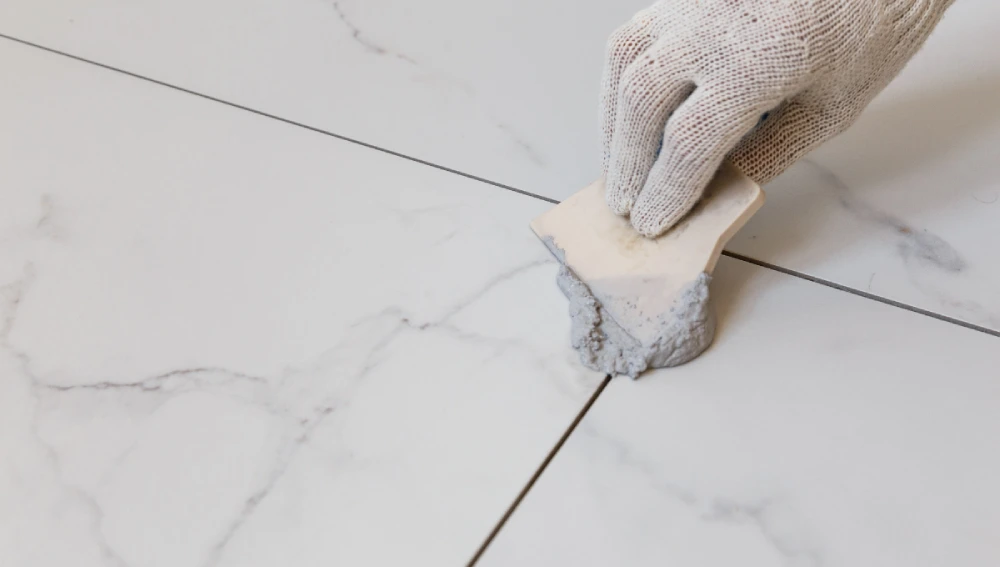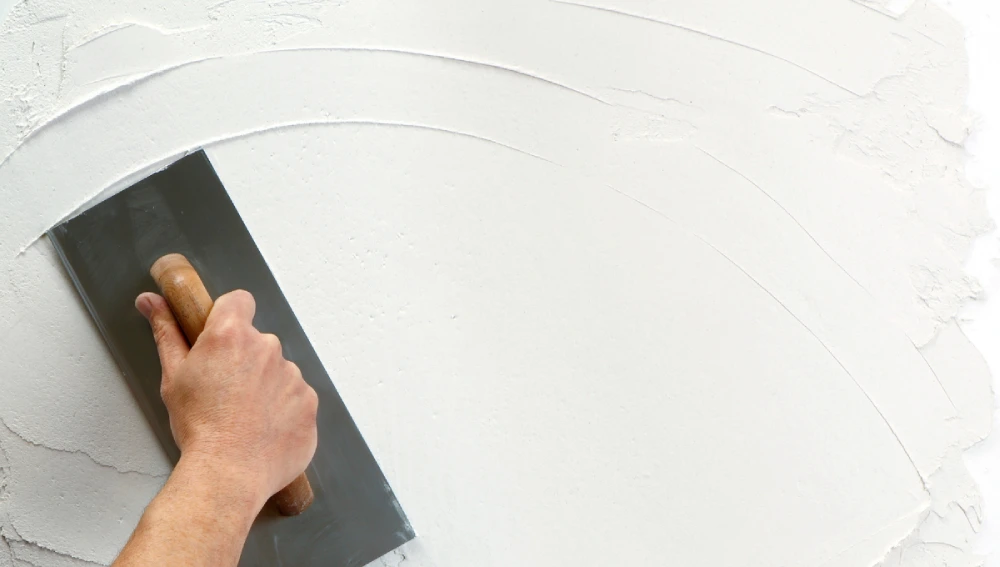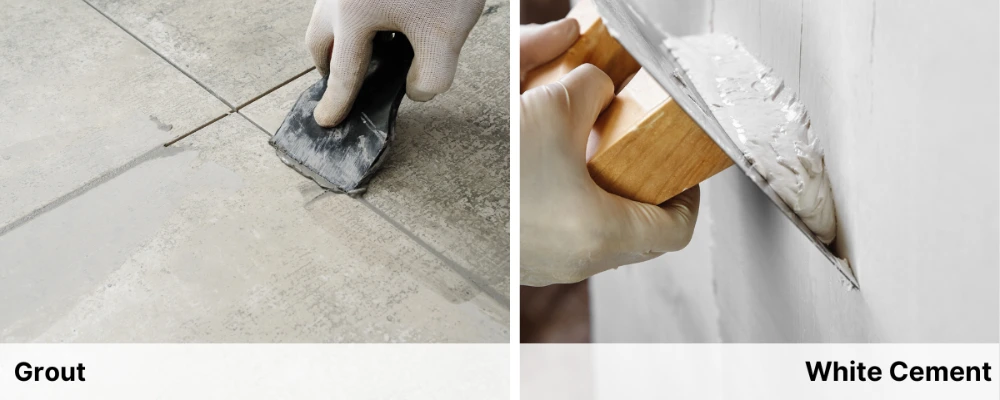When you are beginning construction or tiling projects, you have to know the materials that you require. There are two types of grout which can be used namely: the white cement and the standard grout type. Though they seem similar, they come with variations in purpose and have those features that set them apart. In this section, we will elaborate on these two materials to enable users to make proper decisions on the materials to use in their projects.
What is Grout?

Grout fills gaps between tiles and masonry surfaces this process is known as Grouting. It keeps tiles in place and stops moisture from getting into the surfaces below. You can find grout in different types, each good for specific needs and situations.
Types of Grout
- Cement-Based Grout: People use this grout type the most. It combines cement, water, and sand. You’ll find two main kinds:
- Sanded Grout: This one has sand in it, which makes it stronger and better to fill larger gaps (wider than 1/8 inch). The sand helps prevent cracking and helps it last longer.
- Unsanded Grout: This is a non-sanded grout, thus suitable for joints of up to 1/8 inch in width. It also does not leave an abrasive surface and will not damage delicate tiles.
- Epoxy Grout: A versatile material that results from the mixture of resins and hardeners, epoxy grout, is well-regarded for its ability to withstand stains, chemicals as well as moisture. It is best for areas with high traffic and areas that are exposed to high conditions, like the kitchen or industries.
- Urethane Grout: Individuals appreciate this grout due to its versatility, and they can easily apply it to the surface. Urethane grout does a good job of warding off stains as well. It is readily usable both indoors and outdoors, for the home or office
Properties of Grout
- Flexibility: Grout has the ability to bend and stretch. This key feature lets it handle small shifts in tiled areas. As a result, it helps prevent cracks from forming and keeps the tiles in good shape.
- Color and Texture: You’ll find grout in many shades and textures. You can pick a color that goes well with your tiles or contrasts from them to get the look you want. The texture of the grout can also change how the finished surface looks and feels overall.
- Durability: The life span of the grout you put in will depend on the type that you use. Different from epoxy or urethane grouts, cement-based ones are superior in their wearing characteristics. Conversely, epoxy and urethane grouts endure usage and tear; they are stronger for stains, and blends are better for water contents too.
Common Uses for Grout
- Tile Installation: Grout’s main function is to fill spaces between tiles. It keeps tiles steady and stops water from getting under them, which could cause damage.
- Masonry Work: Builders also use grout in masonry to fill gaps between bricks or stones. It gives stability and makes sure the masonry stays secure.
What is White Cement?

White cement stands out because of its bright white color. People use it to bind concrete and mortar. Many people like white cement for decorative finishes because it looks clean and nice.
Properties of White Cement
- Composition: White cement is made from raw materials low in iron, which gives it its white color. It mainly consists of limestone, clay, and other materials, differentiating it from standard grey cement through its minimal iron content.
- Strength and Durability: White cement shares comparable strength and quality with standard grey cement. It can be used in construction to create structural elements while also enhancing aesthetic appeal.
- Aesthetic Appeal: The main reason people use white cement is how good it looks. Its bright white color helps create a clean and polished look. You can also mix it with pigments to get a wide range of colors for decorative purposes.
Common Uses for White Cement
- Concrete Production: White cement has a role in creating concrete with a bright, clean look. Builders use it for architectural and decorative projects where concrete appearance matters, like facades, pavements, and sculptures.
- Mortar: White cement also has an impact on mortar production to lay bricks and tiles. It creates a strong bond and works well when people want a white or clean finish. white cement also fills up the gaps and cracks
- Finishing: Besides its use in concrete and mortar, white cement is also used in surface finishing. People use this to get a smooth, polished look, making it a go-to choice for indoor projects where looks matter.
Comparing Grout and White Cement
Understanding how grout and white cement differ can help you pick the right material for your project. Here’s a rundown of the main differences:
| Differences | Grout | White Cement |
Purpose | This fills gaps between tiles and masonry surfaces. It keeps tiles in place and stops moisture from penetrating | This acts as a binding material in concrete and mortar. People also use it for decorative finishes because of its bright color. |
Composition | This contains cement, water, and sand. Some types, like epoxy grout, have resins and other additives. | This comes from materials with low iron content, such as limestone and clay, which give it a white color. |
Flexibility | Has the flexibility to handle small shifts in tiled surfaces and stop cracks. | Stiff and used when flexibility isn’t the main concern. |
Color and Finish | It comes in many colors and textures. You can pick a color that goes well with or contrasts the tiles. | Bright white, but you can mix in colors to get different shades. People often use it because it looks good and has a smooth finish. |
Durability | How long it lasts depends on what kind you use. Epoxy and urethane grouts hold up better than the usual cement-based ones. | It’s as tough as grey cement and works well for building things and making them look good. |
Frequently Asked Questions (FAQ)
No, you can’t use grout to make concrete. Grout fills gaps between tiles, while white cement has a specific design to make concrete and mortar. Using grout for concrete wouldn’t give you the strength and toughness you need for building structures.
The following are important factors to consider when selecting the right grout for your tiles:
Width of the Joint – Sanded grout is recommended for seams wider than 1/8 inch. On the other hand, un-sanded kinds may function better in circumstances where widths are smaller than that dimension.
White cement is colorable. You can do this by adding pigments to it. This gives you a range of colors for your creative projects. Just be sure to stick to the mixing guidelines to achieve the correct shade and texture.

